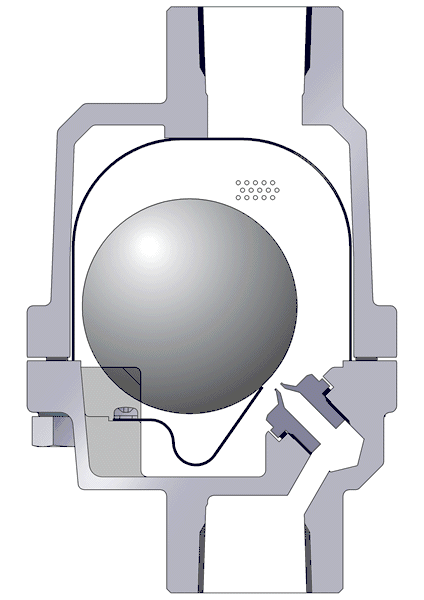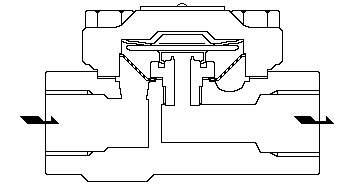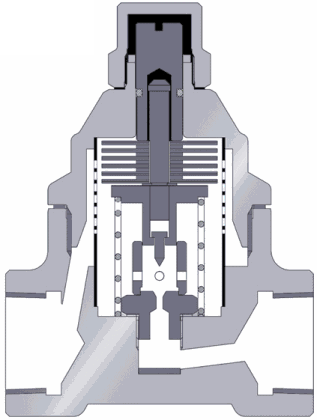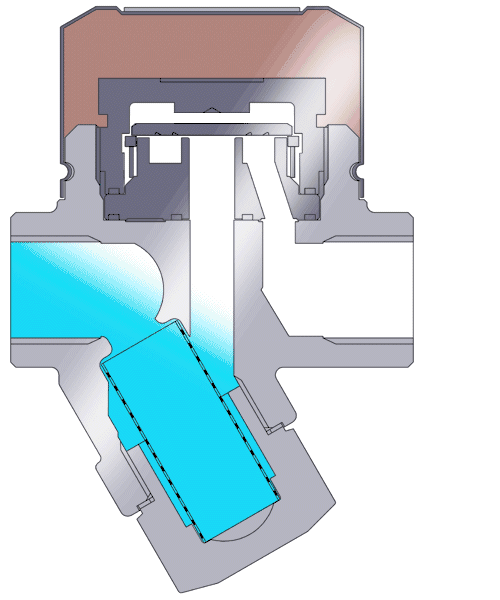Schematic diagram of trap valve
Besides conventional valves such as high pressure gate valve and there is another device for pipeline -steam trap. The steam trap is a valve, also known as a trap, a drain valve, which discharges the condensed water, air and carbon dioxide gas in the steam system as soon as possible, and at the same time automatically prevents the leakage of steam to the greatest extent. There are many types of traps, each with different performance.
When choosing a steam trap, first of all, the characteristics should be selected to meet the optimal operation of the steam heating equipment, and then other objective conditions should be considered, so that the selection of the steam trap you need is correct and effective.
Free float type steam trap. The free float type steam trap uses the principle of buoyancy. The float ball moves up and down with the change of the water level according to the amount of condensed water, automatically adjusts the opening of the valve seat hole, and continuously discharges the condensed water. When the water stops entering, the floating ball drops to the bottom and returns to the closed position, and the drainage stops. Since the drain valve seat hole is always below the condensed water level, a water seal is formed, and the water and gas are naturally separated to achieve no steam leakage.

Capsule Type Steam Traps
The main action element of the bellows-type steam trap is the metal bellows, which is filled with a liquid whose vaporization temperature is lower than the saturation temperature of water.
When the device is just started, low-temperature condensed water appears in the pipeline, and the liquid in the membrane box is in a condensed state. The valve is in the open position. When the temperature of the condensate gradually increases, the filling liquid in the bellows begins to evaporate, the pressure in the bellows rises, and the diaphragm drives the valve core to move in the closing direction. Before the condensate reaches the saturation temperature, the trap is completely closed, and the bellows follows the steam temperature. Change the control valve switch, play the role of steam blocking and drainage.

Inverted Bucket Trap
The inside of the inverted bucket trap is an inverted bucket as a liquid level sensitive component. The opening of the bucket is downward, and the connection lever of the inverted bucket drives the valve core to open and close the valve. The inverted bucket type trap can discharge air, is not afraid of water hammer, and has good anti-fouling performance. The degree of subcooling is small, the steam leakage rate is less than 3%, the maximum back pressure rate is 75%, there are many connectors, and the sensitivity is not as good as that of the free float trap. Because the inverted bucket type trap relies on the upward buoyancy of steam to close the valve, and the working pressure difference is less than 0.1MPA, it is not suitable for selection.

Bimetallic Disc Steam Traps
The bimetallic sheet steam trap is driven by the bimetallic sheet temperature sensing element to drive the valve core to open and close the valve.
When the device is just started, low-temperature condensate appears in the pipeline, the bimetal is flat, and the valve core is in the open position under the elastic force of the spring. When the temperature of the condensate gradually increases, the bimetal temperature sensing element begins to bend and deform, and push the valve core to the closed position. The trap is fully closed before the condensate reaches saturation temperature. There is always high temperature condensed water in front of the valve, no steam leakage, and good energy saving effect.

Thermodynamic Traps
Thermodynamic steam traps are very robust and simple to operate. This type of trap works by the dynamic action of flash steam passing through the trap.
During the start-up stage, due to the action of pressure, the disc is pushed up, and the condensed water and air are discharged from the three small holes of the peripheral outlet through the lower part of the disc through the inner valve seat. There is a movable valve plate in the thermodynamic steam trap, which is both a sensitive part and an action execution part. According to the different thermodynamic principles of the flow rate and volume change of steam and condensate passing through, different pressure differences are generated up and down the valve plate to drive the valve plate to open and close the valve.

 +86 512 68781993
+86 512 68781993 


















